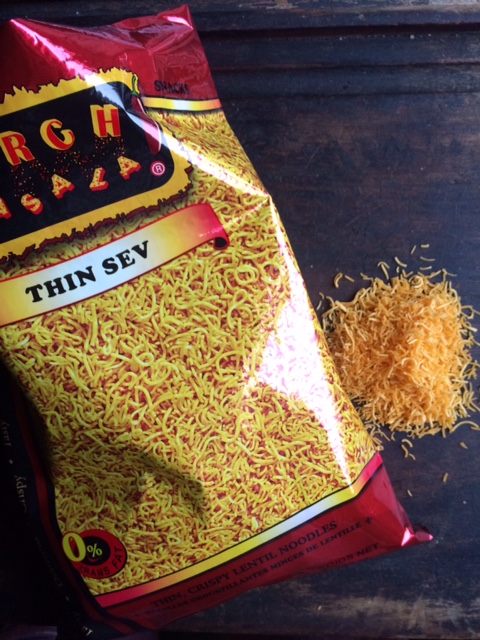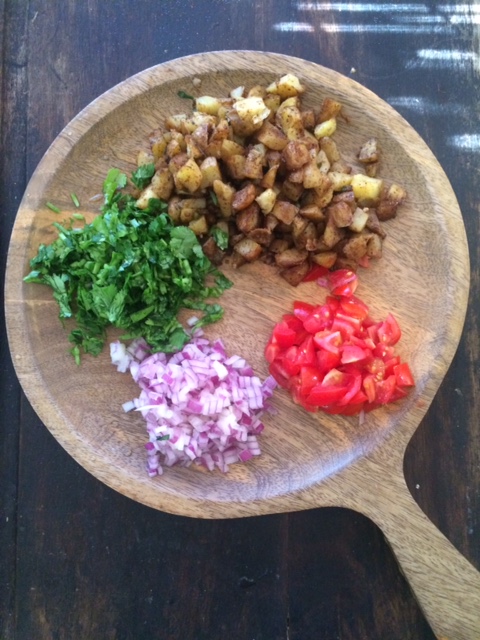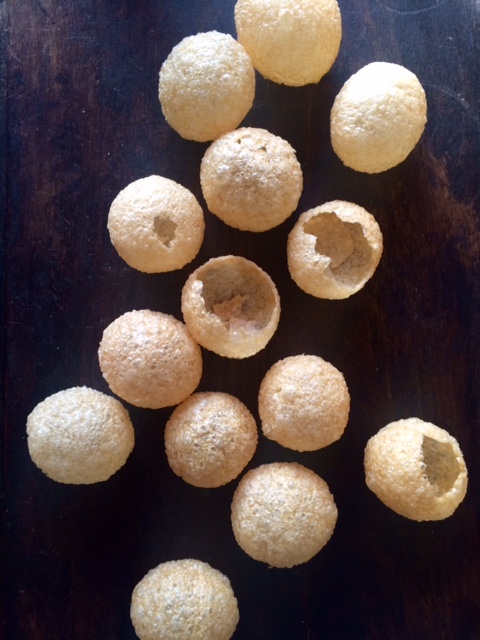The conversation that inspired this post was with my friend Krishna Kishora, our leader on the Indian retreat. We sat next to one another on a flight from Chennai to Kolkata. He could have been sleeping, taking much needed rest before our next adventure, instead he continued to serve and opened up a lively conversation about the layers of the false ego. He got so excited saying, “You can write about this and share a recipe of something with a lot of layers!” I don’t know that I did justice to his very generous offering on the subject, but I am incredibly grateful for the lesson and time with my friend.
Years ago, when I graduated from performing arts conservatory in Missouri and moved to New York City as an actress, I had a consistent fear when running into people I knew on the street. Other graduates, celebrated alumni, acquaintances from auditions - my peers. I was afraid they would ask, “What are you working on?” “Are you in a show?” “Did you get seen for this?” “Do you have an agent yet?” It was a real fear. These exchanges happened often. I actually would prep a little list before I left my apartment each day to equip myself for these chance meetings. “I’m singing on this demo, I was called back to this workshop, I’m in this dance class, I’ve met 2 agents at a seminar…” I never felt like my list was going to satisfy or impress anyone. I suppose looking back, no one was trying to make me feel small or challenging my success, they were probably asking out of their own fear, their own smallness. Twenty some years later I can clearly identify that fear and the value I gave to the opinion of others as my ego. More specifically, my false ego.
Ego and false ego have many layers. Ego is often aligned with self-centeredness, inflated pride and superiority to others, but it is also a term for our conscious mind and the awareness of our own identity and existence. It’s a vibration of I AM. False ego is a false identity of what we are. It’s what makes us think our self and our external body are one in the same. My time in India helped me peel back the layers and get closer to the core idea that we are all spiritual beings.
We think “I am my body.” We think our temporary bodily labels - white, black, gay, straight, fat, thin, young, old, sick, healthy etc. actually apply to us. Not true. These labels can’t touch our spiritual energy - the conscious and eternal part of ourselves. Spiritual energy is superior to the temporary and unconscious matter which makes up our material bodies. False ego is made up of inferior material energy layers. It’s almost like false ego is a drug and we are under the influence. Taking credit for things, attaching ourselves to circumstances, and giving value to things that have no bearing on who we really are.
Each time I travel to India, I go through a round of inquiries, “How can you stand seeing all the poverty?” “How can you have a good time in the midst of so much suffering?” In the past my answers have focused on the beauty, the colors, the sensory overload of sights, sounds, and smell that overpower the negative. This trip, all of that was still true, but I discovered something else. I was traveling with Krishna devotees. Their practices of service and devotion loosen the grips of material energy, lift the layers of false ego, and give them a ‘fast pass’ to their truest selves.
This service and devotion isn’t exclusive to Krishna Consciousness, India breathes this mood of sanctity and spirit. I walk into a market and I see shopkeepers sweeping the dirt that make up the doorway to their stores and at some point I stop seeing that these people are sweeping the dirt. I see them taking pride in their property and providing a tidier shopping experience for their customers. They are elevated somehow, not identifying with the circumstances that I might pity or judge. No false ego. It’s a small example, but that is one of my favorite sights in India — the dirt sweepers.
People wash their clothes in the river; the river water is sacred. Cows roam through the streets and impede traffic flow; the cows are sacred. A family might not have money to offer at the temple but they find the most beautiful flowers and string a garland as their gift to God; it’s a sacred act. Things that could possibly annoy or cause embarrassment appeal to their spiritual selves, not the material ones. And all signs of the false ego begin to melt away.
It’s a beautiful way to live and something I hope to remember again and again in my daily life now that I’ve returned home to NYC. When (perceived as bad) things happen - illness, loss, heartbreak, disappointment - I hope to peel back the layers of my false ego, and see that the real me can’t be touched by these occurrences. I hope to melt away a layer of my false identify and connect more with my real ego, my spiritual self.
To complete Kish’s idea, I am sharing one of my all time favorite Indian dishes with you. It has layers of complex flavors: sweet, spicy, creamy, crunchy, salty, with both fresh and cooked elements. This is a street food or a snack (chaat.) It's kind of like Indian nachos!
Sev Puri
Poori are puffed breads that become cracker-like because they are so small and sev are tiny fried noodles. The little puffed poori are filled with spicy potatoes, topped with yogurt, chutneys, fresh tomatoes and onions and topped with the sev. Heaven in a bite, I tell you! All of these ethnic ingredients can be ordered online from Kalustyan’s but I’ll make some suggestions in the recipe for things you might find in your neck of the woods…
- 1 teaspoon olive oil
- 1/2 teaspoon garam masala (no garam masala? make your own!)
- 2/3 cup finely diced potatoes
- 1 teaspoon finely minced jalapeño
- salt and pepper
- 1/2 cup finely chopped tomato
- 1/2 cup finely chopped onion
- 6 tablespoons green chutney (or use your favorite spicy green chili sauce)
- 6 tablespoons tamarind date chutney (here’s a sub using apple butter!)
- 6 tablespoons plain yogurt
- 16 puffed poori (or pita chips/tortilla chips)
- 1/2 cup sev (you can fry up some dry vermicelli noodles and break them into small pieces)
- chopped cilantro
Heat the oil over medium heat and add the garam masala spice. Cook and stir for a minute or 2 to let the spices bloom and lose their dusty quality. Add the potatoes and jalapeño, season with salt and pepper. Reduce the heat so the spices don't burn. Cook for 5-7 minutes until potatoes are soft. Arrange the poori or chips on a plate. Carefully break a hole into the poori so there is a way to fill them. Layer in the potatoes, chopped tomato, chopped onion, the chutneys, yogurt, and sev noodles. Garnish with chopped cilantro. eat them right away before they get soggy!










